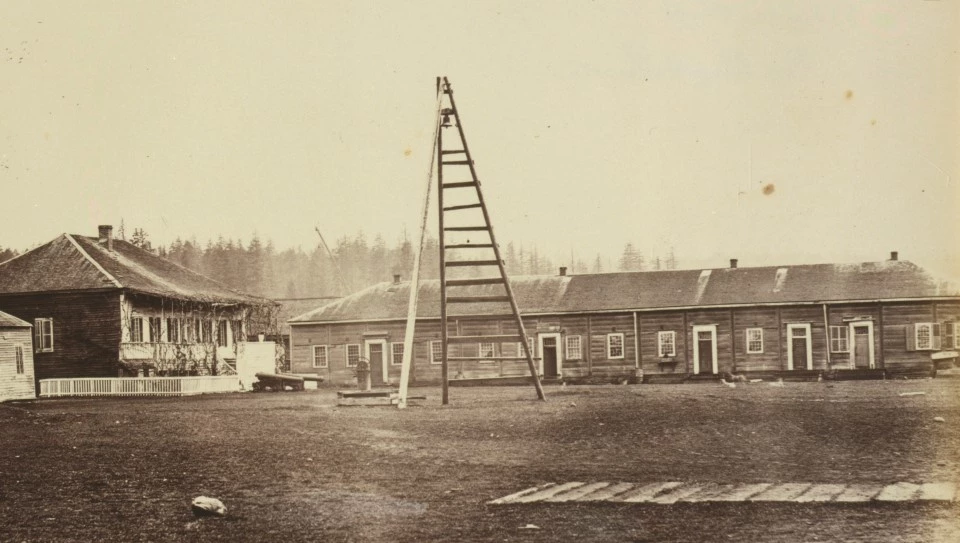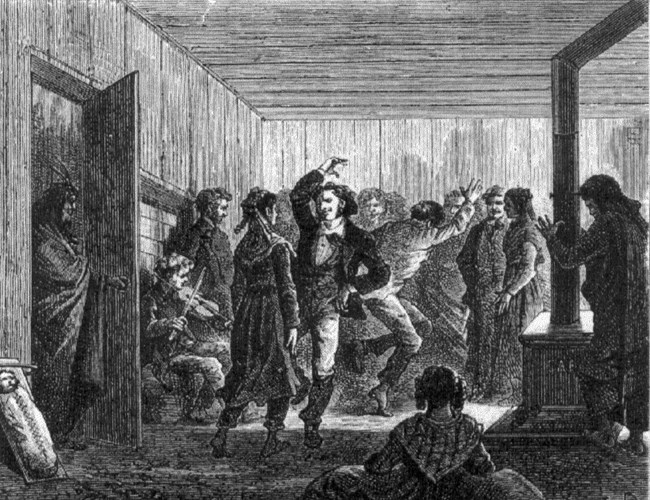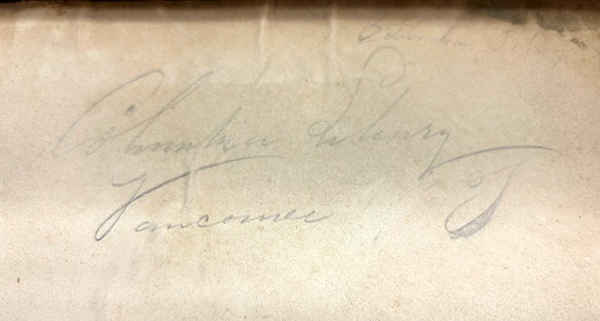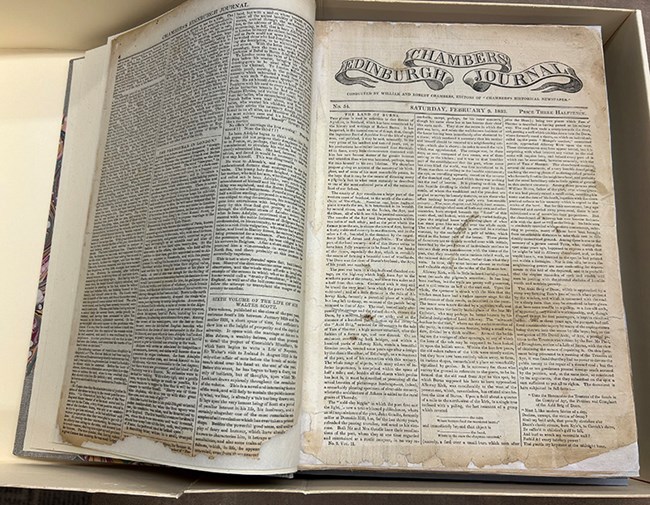Last updated: June 10, 2025
Article
The Bachelors' Hall at Fort Vancouver

Library of Congress, unprocessed in PR 13 CN 1999:001, no. 1, leaf 10
By Jadyn Pando
Bachelors’ Hall (sometimes called the Bachelors’ Quarters) was a one and a half story, wooden residential building constructed in 1838 to house the Hudson’s Bay Company (HBC) officers, clerks, and visitors. It measured only 153 by 33 feet and contained between eight and ten single room apartments. There may also have been loft space available to residents.
The building was referred to as Bachelors’ Hall because it was inhabited mostly by unmarried men, but despite its name, there are accounts of families living in the building as well. One such account, written by Reverend Herbert Beaver, details a small room shared by two families totaling 11 people. “Mr. Ross, one of your clerks, came in with the Express, bringing a woman and four children. She has since been confined with the fifth, and the whole family have, ever since their arrival, been dwelling with Mrs. McKenzie, the wife of another of your clerks, and her three children, making eleven persons in the same room, which is undivided and thirty feet by fifteen in size and in which, with the exception of the man, who takes his meals at the mess, they all eat, sleep, wash and dry their clothes, none ever being hung out.”
It is challenging to track the specific residents in any given year, but available records reflect that most were clerks and post masters, plus a farmer, an engineer, and a surgeon. By modern standards, comfort was not a high priority in these living quarters, as they were intended for subordinate officers and clerks. However, there were little luxuries available to the residents, compared to those employees who lived outside the Fort in the nearby Village. One such service provided to the bachelors living in the Hall was laundry service by Native American women employed by the HBC. For those without wives, this was viewed as essential help.
The class system at Fort Vancouver was strong: the highest-ranking employees lived in the Chief Factor’s House, their immediate subordinates lived in Bachelors’ Hall, and the majority of workers weren’t allowed in either place. Bachelors’ Hall excluded tradesman, trappers, and laborers. Visitors to the Fort were welcome, though, and treated hospitably. Those living and working at Fort Vancouver were somewhat isolated, so visitors were a way to receive news and socialize. At times, men or families were ordered to leave their apartments and find temporary arrangements to make room for visiting missionaries or business partners.
Bachelors’ Hall (sometimes called the Bachelors’ Quarters) was a one and a half story, wooden residential building constructed in 1838 to house the Hudson’s Bay Company (HBC) officers, clerks, and visitors. It measured only 153 by 33 feet and contained between eight and ten single room apartments. There may also have been loft space available to residents.
The building was referred to as Bachelors’ Hall because it was inhabited mostly by unmarried men, but despite its name, there are accounts of families living in the building as well. One such account, written by Reverend Herbert Beaver, details a small room shared by two families totaling 11 people. “Mr. Ross, one of your clerks, came in with the Express, bringing a woman and four children. She has since been confined with the fifth, and the whole family have, ever since their arrival, been dwelling with Mrs. McKenzie, the wife of another of your clerks, and her three children, making eleven persons in the same room, which is undivided and thirty feet by fifteen in size and in which, with the exception of the man, who takes his meals at the mess, they all eat, sleep, wash and dry their clothes, none ever being hung out.”
It is challenging to track the specific residents in any given year, but available records reflect that most were clerks and post masters, plus a farmer, an engineer, and a surgeon. By modern standards, comfort was not a high priority in these living quarters, as they were intended for subordinate officers and clerks. However, there were little luxuries available to the residents, compared to those employees who lived outside the Fort in the nearby Village. One such service provided to the bachelors living in the Hall was laundry service by Native American women employed by the HBC. For those without wives, this was viewed as essential help.
The class system at Fort Vancouver was strong: the highest-ranking employees lived in the Chief Factor’s House, their immediate subordinates lived in Bachelors’ Hall, and the majority of workers weren’t allowed in either place. Bachelors’ Hall excluded tradesman, trappers, and laborers. Visitors to the Fort were welcome, though, and treated hospitably. Those living and working at Fort Vancouver were somewhat isolated, so visitors were a way to receive news and socialize. At times, men or families were ordered to leave their apartments and find temporary arrangements to make room for visiting missionaries or business partners.

National Archives of Canada
Robert M. Ballantyne, a Scottish author and artist who spent five years working with the HBC, wrote about the hall and what was kept inside. He described artillery and fishing equipment stored in the corners, garments made of Indian silk, beads, and wool decorating the walls, and an array of items, such as books, surgical instruments, and tobacco pipes, covering unpainted tables. On the walls were also wool and leather great-coats, fur hats, and snowshoes.
Isaac Cowie, another Scottish-born HBC employee, wrote that the clerks collected colored prints that were hung throughout the hall. Subjects included prize fighters, racehorses, hunting scenes, and ships. For entertainment, they also collected different musical instruments and games. There were violins, flutes, accordions, concertinas, harps, playing cards, cribbage boards, and dominoes.

FOVA 57384, NPS photo / T. Langford

FOVA 57384, NPS photo / T. Langford
